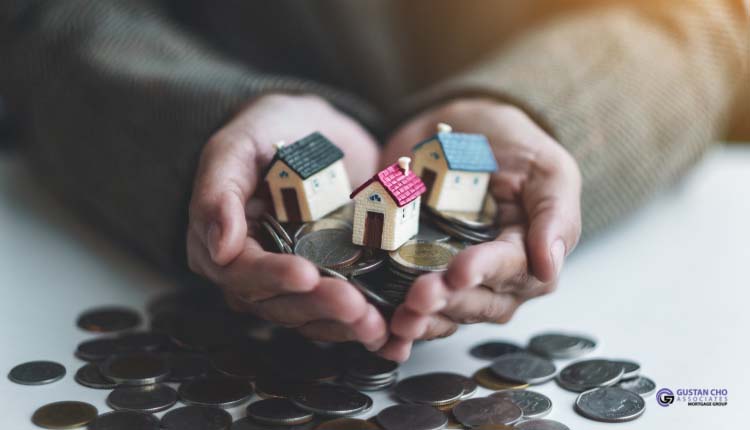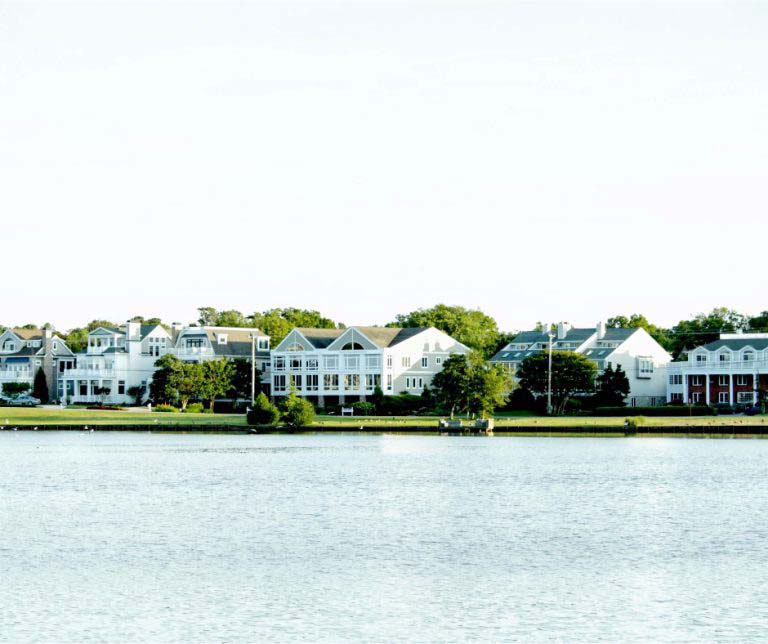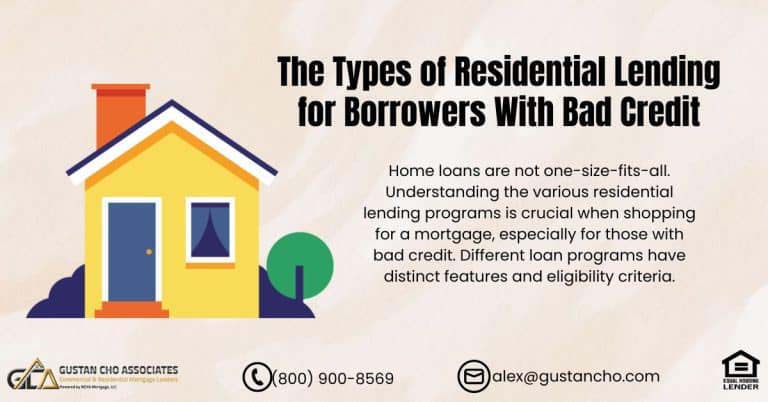Cash-out refinance mortgage rates are higher than rate and term refinance rates. Cash-out mortgage rates are substantially higher for homeowners with lower credit scores. The combination of historic high home prices and record-low mortgage rates is fueling many Americans to do a cash-out refinance mortgage loan and tap into their home equity.
Cash-Out Refinance Mortgage Rates vs. Rate-and-Term Mortgage Rates
Discover how cash-out refinance mortgage rates stack up against rate-and-term refinance rates. Weigh savings, risks, and benefits with Gustan Cho Associates.
What You Need to Know About Cash-Out Refinance Mortgage Rates
Cash-out refinance mortgage rates are the interest rates you pay when you replace your current mortgage and take out a chunk of your home’s equity in cash. Dale Elenteny, a senior mortgage loan originator at Gustan Cho Associates says the following about cash-out refinance mortgage rates vs rate and term rates:
Since the lender is extending more money on top of your balance, these rates are usually higher than those for a straightforward rate-and-term refinance.
Most borrowers opt for a cash-out to renovate, consolidate high-interest debt, or cover a big expense. While it can be a smart move, you should definitely compare these cash-out rates to the simpler option of just resetting the rate and term.
What’s a Rate and Term Refinance?
A rate and term refinance gives you a new mortgage to replace your current one. The new loan often has a lower interest rate or shifts the loan length to a shorter or longer term. Unlike a cash-out refinance, you do not withdraw any extra money. Because the amount borrowed stays the same and lender risk does not increase, rate and term refinance rates tend to be lower than cash-out rates.
Cash-Out vs Rate-and-Term Refinance Explained
See which mortgage refinance saves you more and fits your goals.
Rate and Term Refinance vs. Cash-Out Refinance Rates
Why Cash-Out Rates Cost More
Lenders see cash-out refinances as riskier since the loan amount is higher. That’s why cash-out refinance rates often run 0.25% to 0.5% higher than rate and term refinances rates.
Loan-to-Value (LTV) Rules
Cash-out refinances usually have stricter LTV rules. If you want to take cash out, most lenders cap the loan at 80% of the home’s value. For a rate and term refinance, you may be able to borrow a higher percentage.
The Role of Credit Score
A higher credit score helps you lock in better rates for both refinance options. The gap between the cash-out and rate and term rates grows larger for borrowers with lower scores.
Why a Cash-Out Refinance Might Be Smart
- Quick Cash Access: Turn your home equity into cash for debt consolidation, home projects, or big purchases.
- Possible Tax Perks: The interest on the loan could still be tax deductible if you use it for home upgrades.
- Simple Monthly Bills: Combining debts into your mortgage means tracking only one monthly payment.
Why a Rate-and-Term Refinance is a Good Move
- Better Mortgage Rates: Usually, this option gives you the lowest rates lenders have.
- Shorter Loan Terms: Switch to a shorter term, like a 15-year mortgage, and you’ll pay much less interest overall.
- Lower Monthly Bills: If you need a smaller payment, you can stretch the loan term without taking out extra cash.
What to Watch Out For
Cash-Out Refinance Cautions
- Rates are often higher than for a plain rate-and-term refi.
- If you stretch the loan, you’ll be paying longer.
- A larger loan balance could mean more risk if you can’t pay.
Rate-and-Term Refinance Cautions
- No extra cash, only new terms and rates.
- Closing fees can still add thousands to your new balance.
- A longer term can lead to more total interest, even if monthly payments are smaller.
Which Option Is Best for You?
Deciding between cash-out refinance mortgage rates and rate-and-term refinance rates comes down to what you want to achieve. If you’re looking for cash to pay for big expenses or to combine debt, a cash-out refinance may be worth the extra rate. A rate-and-term refinance is probably your best bet to lower interest costs and reduce your monthly payment.
At Gustan Cho Associates, we guide borrowers through both loan types, ensuring they get the most competitive refinance program possible—with no lender overlays.
FAQs About Cash-Out Refinance Mortgage Rates
How Do Cash-Out Refinance Mortgage Rates Compare to Rate-and-Term Rates?
Cash-out refinance mortgage rates tend to be higher than rate-and-term rates because lenders see cash-out loans carrying more risk.
How Much Higher Are Cash-Out Refinance Mortgage Rates?
They are usually between 0.25% and 0.5% higher. However, the difference hinges on your credit score, loan-to-value (LTV) ratio, and the current market.
Why Are Cash-Out Refinance Mortgage Rates Higher?
Because you’re increasing your loan balance and the lender takes on more risk, they charge a slightly higher interest rate to offset that added risk.
Should My Credit Score Be High For a Cash-Out Refinance?
Yes, a solid credit score helps you unlock the best rates. If your score is below average, you might face a larger difference in your interest rate.
Can I Use a Cash-Out Refinance To Pay Off Debt?
Absolutely! Many people choose a cash-out refinance to pay off credit cards or high-interest loans, which helps them simplify payments and save on interest.
What’s The Main Perk of a Rate-and-Term Refinance?
The top benefit is that you can lock in the lowest mortgage rates available, which cuts your monthly payments and saves you money over the life of the loan.
Can I Do a Cash-Out Refinance on a Rental Property?
You can! However, be prepared for higher mortgage rates than you’d see on your primary home since lenders consider investment properties riskier.
How Much Equity Must I Keep For a Cash-Out Refinance?
Most lenders ask you to retain at least 20% equity in your home, meaning you can only cash out the amount that keeps you at that level.
Are Closing Costs Higher on a Cash-Out Refinance?
Not really. The closing costs are usually in the same range. However, because the loan amount is larger, the total dollars may look bigger on the statement.
Should I Choose a Cash-Out Refinance or a Rate and Term Refinance?
If you want money for big expenses or to pay off high-interest debt, cash-out can help. But if your goal is to get a lower monthly payment or to pay less total interest over time, then a rate and term refinance is the better choice.
What Do People Spend The Proceeds From Cash-Out Refinance Mortgage
Tens of thousands of Americans are house rich and sitting on a lot of equity. A large percentage of Americans are dipping into their home equity to cash in and use the cash for multiplying their real estate portfolio. The nation’s housing shortage is making it lucrative for investors to invest in rental properties.
People can spend the proceeds from the cash-out refinance for investments, renovations, vacations, pay down debts, weddings, education, and dozens of other reasons.
Homeowners can use the proceeds from a cash-out refinance for any purpose they see fit. Cash-out refinance loans are tax-free. Homeowners do not pay a dime in taxes from the proceeds of a cash-out refinance.
Which Refinance Option Fits Your Goals?
Analyze cash-out and rate-and-term options to optimize your home loan.
Why Are Cash-Out Refinance Mortgage Rates Higher Than Rate and Term Rates?
The reason cash-out refinance mortgage rates are higher than rate and term rates are that lenders consider cash-out refinances higher risk than rate and term.
Loan level pricing adjustments, commonly referred to as LLPAs, are pricing hits or pricing adjustments for each layer of risk the lender considers.
Every homeowner is trying to strive for the best lenders with the best cash-out refinance mortgage rates. Many borrowers with lower credit scores and/or bad credit often feel grateful just being able to do a cash-out refinance loan because they need the money for one purpose or another.
Booming Housing Market Spark Thousands To Dip Into Home Equity and Using Cash-Out To Invest in Homes
The housing market is booming. Many people are going into investing in real estate again. There are many mortgage loan programs for investors such as non-QM loans, no-doc loans, bank statement mortgages, asset-depletion, rental income-only investment properties, fix and flix loans, and dozens of other alternative mortgage loan programs.
A large number of homeowners are doing a cash-out refinance mortgage and using the proceeds to invest in real estate. One to four-unit investment homes is becoming increasingly popular.
In this article, we will discuss and cover how to find lenders with the best cash-out refinance mortgage rates and using the proceeds to grow your network and investing in investment homes.
How To Shop For Lenders With The Best Cash-Out Refinance Mortgage Rates and Negotiate
Getting the lowest cash-out refinance mortgage rates will save homeowners tens of thousands of dollars over the term of the loan. We will thoroughly explain how to find lenders with the best and lowest cash-out mortgage rates to save you thousands of dollars in interest expense.
Understanding how the home purchase and refinance mortgage process works is key for you to understand in finding the best lenders with the lowest cash-out refinance mortgage rates.
We will discuss on how to shop for the best rates, how lenders have different rates, how not all lenders are not the same in pricing and terms of loans they are offering, and how to buy and multiply your investment property portfolio by using your proceeds from your cash-out refinance.
What Is The Pricing on Cash-Out Refinance Mortgage Rates versus Rates On Rate and Term Refinances
Common LLPAs include cash-out refinances, low credit scores, type of property, loan to value (on conventional loans), high-balance government and/or conventional loans, and other risk factors from borrowers that the lender considers. With today’s historic mortgage rates and high home values, homeowners can easily tap into their home equity and pull cash out.
Cash-out refinance mortgage rates are still competitive even with the loan level pricing adjustments on the cash-out hit.
After six months or longer, homeowners can reconsider doing a rate and term refinance at a lower rate if they are able to get a net tangible benefit. It depends on where the rates will be.
Homeowners Are Tapping Into Their Equity To Cash In For Renovations, Investments, Pay Debts In Hot Bull Housing Market
Home values have been skyrocketing throughout the U.S. This means many homeowners have equity in their homes. Homeowners need equity in their homes to do a cash-out refinance mortgage.
Cash-out refinance mortgage rates are higher than rate and term refinance rates. This is due to added layers of risk on cash-out mortgages.
Lenders will apply loan level pricing adjustments, also referred to as LLPA, on cash-out refinance mortgages. In this article, we will cover and discuss Cash-Out Refinance Mortgage Rates And Loan Level Pricing Adjustments.
Reasons Why Cash-Out Refinance Mortgage Rates Are Higher Than Rate And Term Refinances
There are many advantages of cash-out refinances. All proceeds from a cash-out refinance are tax-free. The proceeds from using the equity from your home are not taxable. In general, Cash-Out Refinance Mortgage Rates are higher than rate and term refinance rates. This is due to the lender taking on an additional layer of risk. For example, let’s assume market rates are 3.5% for prime borrowers.
Par rate of 3.5% is offered to prime borrowers with 740 FICO, 20% or more in equity, single-family homes, lower debt-to-income ratios, and other positive factors where it minimizes risks for borrowers.
The mortgage rate bar will start at 3.5% by lenders. Then loan level pricing adjustments are added for risk factors sustained by lenders. In the next paragraph, we will give our viewers examples of loan level pricing adjustments.
Cash-Out Refinance Rates And LLPA Including On Cash-Out Refinance Mortgage Rates
Many homeowners who apply for cash-out refinances wonder why they are getting charged a higher rate than the par rate. This is because of pricing adjustments.
Loan Level Pricing Adjustments are pricing hits charged by the lender due to layers of risks associated with the borrower and/or loan programs.
Cash-out refinances are considered higher-risk loans to lenders. This is because it reduces the equity in the home. Pricing Adjustments on cash-outs can have pricing hits of 0.50% or higher.
Shopping For A Lender With The Best Cash-Out Refinance Mortgage Rates
All lenders will start out with a prime rate on conforming and/or other loan programs for prime borrowers which is the par rate. The par rate is the starting point when pricing out a mortgage loan. From the par rate comes in pricing hits, often referred to as loan level pricing adjustments (LLPAs). Dale Elenteny, a senior mortgage loan originator at Gustan Cho Associates said the following about shopping for a lender with the best cash-out refinance mortgage rates:
Pricing adjustments are pricing hits the borrower is charged due to each count of layered risk the lender takes. Not all lenders have the same pricing hits on risk factors.
Some lenders may charge higher pricing hits on certain factors while a different lender may not. Each lender has its own rules and pricing engines based on the borrower’s credit scores, credit profile, debt to income ratio, loan to value, mortgage rates, and loan level pricing adjustments. Rates and discount points charged can vary widely from lender to lender.
Cash-Out or Rate-and-Term? Make the Right Mortgage Choice
Avoid surprises and maximize your savings with the right refinance.
Comparing for The Best Cash-Out Refinance Mortgage Rates and Lowest Fees and Costs
Borrowers need to compare apples to apples and not just get the best rates but also the lowest possible fees and costs. This is why it is very important to shop for rates from several different lenders. All lenders will have pricing hits on cash-out refinances.
The key is how to shop for the best lender with the lowest rates on cash-out refinance based on your credit/income/risk profile.
Many homeowners with lower credit scores think that shopping for the best cash-out refinance mortgage rates is a waste of time and feel they have bad credit so they are just lucky to get a cash-out refinance loan. This is not right, not true, and not acceptable. Getting a slightly lower rate can save a homeowner tens of thousands of dollars over the term of the loan.
Cash-Out Refinance Mortgage Rates and Other Common LLPAs
Here are common loan level pricing adjustments charged by lenders:
- All mortgage lenders will have loan level pricing adjustments on cash-out refinances
- Each lender will have their own LLPAs based on credit criteria and the subject property
- It is best to shop for the best cash-out refinance mortgage rates by getting rate quotes from several different mortgage companies
We will show you later in this article how to shop for lenders with the best cash-out refinance mortgage rates. The team at Gustan Cho Associates always quotes our clients with the very best cash-out refinance mortgage rates available in the marketplace.
Shopping For The Types Of Lenders To Get The Best Cash-Out Refinance Mortgage Rates
We always recommend our borrowers to shop for rates and fees so they are well informed on cash-out refinance mortgage rates we are offering and what the competition has to offer. Yes, you can negotiate with lenders for the best cash-out refinance mortgages rates. Not all lenders have the same rates.
Every lender will charge pricing adjustments or loan level pricing adjustments (LLPA) based on layered risk factors. Borrowers have choices on types of lenders they can shop for the best cash-out refinance rates. We will discuss what type of lender to go to who has the best cash-out refinance mortgage rates.
You can always negotiate rates with any lender. Just because you have a lower credit score does not mean you cannot shop for the best cash-out mortgage rates. Whether you are shopping for a home purchase and/or refinance mortgage loan, whether you are shopping for a cash-out refinance mortgage or no-cash-out refinance loan, rates can always be negotiated. We will show you how.
Who Has Better Mortgage Rates? Mortgage Bankers or Mortgage Brokers?
Mortgage brokers need to show the yield spread premium but mortgage bankers do not. The maximum a mortgage broker can charge is a 2.75% yield spread premium which is basically the overall commission the mortgage broker makes. Out of the 2.75% commission, they need to split that up among the overhead costs of the broker shop such as rent/expenses, owners/partners of the mortgage broker company, managers, operations people, processors, closers, and the loan officer’s commission.
The maximum compensation wholesale lender can pay a mortgage broker company of 2.75% is really not much so mortgage broker’s rates are competitive.
Mortgage bankers can charge their commission on the back end substantially higher than 2.75%. Therefore, mortgage rates at mortgage bankers are higher in general unless they have a lower back-end compensation plan. The higher the comp margins, the higher the rates to consumers. The bottom line is the higher the yield spread premium and/or commission, the higher the rate to the consumer. Mortgage bankers, credit unions, and banks are exempt from disclosing yield spread premiums.
Borrower-Paid Versus Lender-Paid Commission of Mortgage Brokers
Mortgage brokers get paid compensation for their services in originating the mortgage loan. There are two types of compensation in the mortgage origination world.
- Lender-paid compensation
- Borrower-paid compensation
On lender-paid compensation, the mortgage broker gets paid by the investor (wholesale lender or end lender) for all loan origination fees and costs for the loan origination services performed. The maximum the mortgage broker can get paid by the wholesale lender is 2.75% of the loan amount.
How To Negotiate Mortgage Broker’s Comp Plan For A Better Rate
However, the mortgage broker can have a lower comp plan with the wholesale lender. It is not uncommon for mortgage brokers to have lower comp plans such as 2.50% or even down to 1.00%.
The lower the comp plan the mortgage broker has with the wholesale lender, the lower the mortgage rates to the borrower. A mortgage broker can have different comp plans with different wholesale lenders.
However, you cannot change the comp plan for one client with a wholesale lender you have a 2.75% comp plan to get that client a better rate than a different client. That is called steering and it is illegal.
How To Negotiate The Lowest Rate Possible On a Cash-Out Refinance Mortgage With A Mortgage Broker
If you want to offer a different rate to a particular individual borrower for one reason or another, you can change the comp plan from lender-paid to borrower-paid comp.
For example, if you have a 2.75% comp plan with ABC wholesale lender but you need to give a lower rate to Borrower A, the borrower can go borrower-paid comp. of maybe 1.50% borrower paid comp.
By doing so, the wholesale lender will discount the rate based on the 2.75% mortgage broker comp plan and charge the borrower a par rate with no commission which will be substantially lower.
Going Borrower-Paid Comp With a Mortgage Broker Will Get The Best Lowest Cash-Out Mortgage Rates
The borrower will be charge a 1.50% loan origination borrower-paid commission which will be listed on the Closing Disclosure (CD). By doing so, the borrower will come out well ahead. The mortgage broker and loan officer will split the 1.50% origination fee so everyone comes out ahead. This is a great way of negotiating the best of the very best cash-out refinance mortgage rates.
What Are The Factors Affecting Pricing of Mortgage Rates
There are multiple factors that affect the pricing of mortgage rates. Loan level pricing adjustments (LLPAs) are pricing adjustment hits on par rates. Every layer of risk a lender considers risky, there is a pricing hit. Below are factors that affect the pricing of a mortgage loan.
- Cash-out or no-cash-out refinance loan
- Loan to value: The higher the LTV, the higher the mortgage rates
- Property types: Single-family homes versus condos, multi-unit, manufactured homes
- Credit scores
- Debt to income ratios
- Manual versus automated underwriting
- Loan size
- State the property is located
- Appraised value
- Type of refinance programs
- Occupancy of borrower
- Number of units on multi-family properties
- Lock period terms– 15 days, 30 days, 60 days
- Lender-paid versus borrower-paid
- Escrowed versus non-escrowed
- Loan program and terms
Not all mortgage companies have the same type of pricing adjustments. One LLPA by one lender may not apply with another lender.
How Pricing Adjustments By Mortgage Companies Work
Many mortgage companies advertise at very low rates. Be very careful when shopping for rates. Not all borrowers have the luxury to shop for rates and terms due to lender overlays and having lower credit profiles.
Many high credit profile borrowers should shop for rates and terms. One lender may quote borrowers very low rates but they may have higher closing costs. Bait and switching borrowers from one loan program to another are very common.
Beware of False and Misleading Advertisements
Some mortgage companies may advertise rates as low as 2.875% when par rates are 3.5%. If you read the fine print on the ad, it may have conditions to get the 2.875% rates such as it only applies for 15-year versus 30-year loans, need to pay discount points, and closing costs may be extremely high.
Compare and contrast mortgage rates, closing costs, and pricing adjustments. Make sure to get all quotes on paper through a Loan Estimate.
You can wheel and deal to get the best mortgage rates. Lenders can get you a better rate with a competitor’s Loan Estimate. This is why getting Loan Estimates from various lenders is important.
Every Lender Has Different Ways Of Pricing Mortgage Rates
Never respond to mass mailers. Many scammers and unorthodox brokers use mailers to get leads. Always do your due diligence by checking and researching the loan officer and mortgage company.
Low rates may be important but make sure you read the fine print. Compare mortgage rates with closing costs. Get quotes from a few different lenders.
For homeowners with stellar credit and have no intentions of refinancing in the future may want to buy down rates with discount points. As mentioned in the earlier paragraph, make sure all quotes are in writing via the Loan Estimate.
Reasons To Take Advantage of Cash-Out Refinancing
Lenders will not monitor what you do with the proceeds from a cash-out refinance mortgage. Borrowers can use it for any purpose they deemed fit. They can use the proceeds to pay down credit cards, HELOCs, automobile loans, student loans, personal loans, or other debts. Or they can use it for investment purposes, pay for weddings, go on vacation, or buy a second home.
Smart Money Management Will Save You Thousands
According to the Federal Reserve, the average assessed interest on credit cards is 17.14%. The average consumer balance on a credit card is $31,170.60 in the second quarter of 2024.
Paying down high-interest credit cards and other higher interest debts is the best idea on proceeds from cash-out refinances.
Average car payments are normally high due to short amortization schedules. Paying off a car loan will greatly reduce your monthly payments since mortgages are amortized over 30 years versus 5 years on auto loans.
Fannie Mae And Freddie Mac Cash-Out Refinance Mortgage Rates and Guidelines
Fannie Mae and Freddie Mac set the guidelines on conventional loans. All borrowers need to go through the Automated Underwriting System (AUS) to determine their eligibility and maximum loan to value. Fannie Mae and Freddie Mac allow up to 80 LTV on cash-out refinancing on conventional loans on single-family homes. Non-QM Loans require a 10% to 30% down payment.
Bank Statement Mortgage Loans require a 10% to 20% down payment. Amount of down payment on non-QM loans, bank statement mortgages, and Jumbo Loans are dependent on borrowers’ credit scores.
The AUS will evaluate borrowers’ credit, income, and other factors within a matter of seconds and render an automated underwriting system approval.
Refinance Smarter: Cash-Out vs Rate-and-Term
Understand the rates, costs, and benefits before making a move.
Maximum Loan To Value On Cash-Out Refinance Mortgage Loans
Below is the maximum loan to value requirements on cash-out refinancing. HUD requires a maximum loan to value of up to 80% LTV on FHA loans. Fannie Mae and Freddie Mac allow up to 80% LTV on cash-out refinancing on single-family homes.
VA loans allow up to 100% LTV on cash-out refinance mortgages. Non-QM caps loan-to-value up to 80% or lower depending on the wholesale non-QM lender. Jumbo mortgages allow up to 70% to 80% LTV depending on the loan size and the jumbo mortgage lender.
What Type of Factors Are Taken Into Consideration by the Automated Underwriting System
The AUS will take the following into consideration when evaluating the automated underwriting system findings on cash-out refinance mortgage loan approvals:
- Borrowers credit scores, credit history, and payment history
- History derogatory events in the past
- Payment history in the past 24 months
- Housing lates in the past 24 months
- Credit tradelines, their history, and payment patterns
- Recent credit inquiries
- Debt to income ratio
- Assets
- Down payment
- Public records reporting on the credit report
- Employment history
- Gift versus own funds
- Co-borrowers
- Reserves
An approve/eligible per AUS is the golden ticket. FHA and VA allow manual underwriting.
Fannie Mae Maximum LTV on Non-Single Family Homes
Fannie Mae’s Maximum Standard Eligibility Requirements are determined by the Automated Underwriting System.
Here is the maximum loan to value guidelines on conventional loans:
- Single-family homes are capped at 80% LTV
- 2 to 4 unit multi-family properties limit the LTV to 75%
- Second-home cash-out guidelines cap LTV to 75%
- Investment homes are capped at 75% LTV for single-family homes and 70% LTV on 2 to 4 unit multi-family properties
Debt service coverage data can be calculated by dividing the total monthly rent by the P.I.T.I. on investment properties.
Freddie Mac Cash-Out Refinance Guidelines on LTV
Freddie Mac’s maximum LTV ratios are the same as Fannie Mae’s.
- For primary residence: 1 unit maximum LTV is 80%
- Maximum LTV on 2-4 unit multi-family homes is 75% LTV
- Maximum LTV on investment homes is 75% on single-family homes
- The LTV gets reduced to 70% LTV on 2 to 4 unit multi-family homes
- Second homes caps at 75% LTV
Cash-Out Refinance Mortgage Rates and Closing Costs
It is very important for borrowers to shop for rates and review the various Loan Estimates. The Loan Estimates are overly disclosed. This is because if the loan office discloses the loan estimate by more than 10%, the lender is liable to cover the costs including third-party fees and charges.
Below are typical closing costs on a mortgage:
- Origination Charges: Origination charges are yield spread premiums, discount points, application fees, credit report fees, processing, and underwriting fees.
- Services Borrowers Cannot Shop For: Third-party fees such as home appraisal fees, home inspection, upfront MIP, and other third party charges need to be listed.
- Services Borrowers Can Shop For: Title charges, attorneys fees, and other fees borrowers can shop for.
Total costs: Any closing costs and/or potential closing costs need to be summarized and listed on the Loan Estimate
Recording Fees And Government Costs
- Recording fees, transfer stamps, and city, county, state fees need to be disclosed
- These costs depend on the city, county, state the property is located
Property Tax And Insurance Escrow (Pre-Paid)
- Prepaid costs are the amount of property tax and homeowners insurance premium lenders impound so they pay it directly to the county and homeowners insurance provider
- Two months of property tax and homeowners insurance is held upfront by lenders to set up the borrower’s escrow account
Qualifying For a Mortgage With a Lender With No Overlays
For more information about this article and/or other mortgage-related topics, please contact us at Gustan Cho Associates at 800-900-8569 or text us for a faster response. Or email us at gcho@gustancho.com. Gustan Cho Associates is a mortgage company licensed in multiple states with no lender overlays on government and conventional loans. We are also experts in non-QM and alternative financing. Our team is available 7 days a week, evenings, weekends, and holidays.
Can I Do A Cash-Out Refinance And Buy Another Property With The Proceeds?
Yes, you can. Many people take out cash proceeds through a cash-out refinance on their primary homes and purchase second homes, and/or investment properties for investment. Or they may purchase their final forever home and keep the one they just did a cash-out refinance as a rental or long-term investment.
Exploring Mortgage Options For Buying Another Home
There is a difference in closing costs versus down payment on a home purchase is. There are two types of payments that are required to close on a home purchase. The first is the down payment and the second is closing costs. The down payment is self-explanatory. For FHA loans, the minimum down payment required on a home purchase is a 3.5% down payment.
For conventional loans, it is a 3% to 5% down payment on primary owner-occupant homes, 10% down payment on second homes, and 20% or more on investment homes.
For Jumbo mortgages, 10% to 30% is the down payment requirement. VA loans and USDA loans do not require any down payment. Condotel and non-warrantable condominium mortgage loans require a 20% to 25% down payment. Second homes mortgage loans and vacation home mortgage loans require a 10% down payment. Investment Homes require a 20% down payment.
Factors That Affect Closing Costs Are
Closing costs are third-party costs and fees that are required besides the down payment. Closing costs depend on where the property is located. Every county and state is different on how many closing costs are.
- Closing costs are any costs and fees associated with the closing transaction on either a home purchase loan or refinance mortgage loan.
Examples of Closing Costs Are the Following:
- title charges
- transfer stamps
- recording fees
- home inspection fees and costs
- credit report fees
- underwriting fees
- courier fees point to buy down the mortgage rates
- one year homeowners insurance and/or flood insurance
- escrows for taxes and insurance
- any other charges that are associated with closing the home loan loan
Comparing Closing Costs Versus Down Payment?
Closing costs are not a fixed percentage amount of a home’s purchase price like the down payment requirement. The closing costs vary from state to state and county to county.
On average, closing costs are between 2% to 5% of the home purchase price, depending on whether the home buyer needs flood insurance or not. Flood insurance can be quite costly.
Costs associated with buying down mortgage rates are also considered as closing costs. For example, closing costs on a home purchase in Illinois are much less than closing costs on a home purchase in Florida. Average closing costs for an Illinois home that is $200,000 is $3,500 whereas average closing costs for a $200,000 Florida home purchase is $5,000.
Cash-Out Refinance vs Rate-and-Term: Know the Difference
Unlock your home equity or lower your interest rate—choose wisely!
Comparing The Two Types of Closing Costs
What Are Non-Recurring Closing Costs
There are two types of closing costs. Non-recurring closing costs and recurring closing costs. Non-recurring closing costs are costs and fees that are paid only once and do not occur again.
Some examples of non-recurring closing costs are the following:
- title charges
- escrow set up fees
- notary fees and costs
- wire fees, credit report fees, and costs
- underwriting fees
- attorney costs and fees
- endorsements
- recording charges and fees
- transfer stamps and transfer taxes
- mortgage lender costs and fees that are paid in conjunction with the origination of the mortgage loan per line 800 of the HUD settlement statement
What Are Recurring Closing Costs
Recurring closing costs are also known as prepaid. These recurring costs are fees and charges that you will continuously pay as long as you own a home.
Examples of recurring closing costs are the following:
- homeowners insurance premium
- flood insurance if applicable
- property taxes
- pre-paid interest
- mortgage insurance premium
- other fees and charges
Using Seller Concession To Pay Homebuyer’s Closing Costs
To offset closing costs from the home buyer, the home seller can give a home buyer a seller’s concession towards a home buyer’s closing costs. For example, if the bottom line dollar amount a home seller wants for their property is $100,000, the home seller can inflate the purchase price to $105,000 and give the home buyer a $5,000 seller concession towards the home buyer’s closing costs.
With the sellers’ concession, the home buyer can pay for the following:
- title charges
- transfer stamps
- prepaid
- homeowners insurance
- attorneys fees, points
- other closing costs associated with the home purchase
What Is The Maximum Amount A Home Seller Can Contribute Towards Buyer’s Closing Closing Costs
The maximum a home seller can contribute towards a homebuyer’s closing costs with a seller concession depends on the mortgage loan program:
- Maximum sellers concession home sellers can contribute buyers on FHA loans is 6%
- For conventional loans with a 35% down payment is 3%
- For conventional loans with 10% or more down payment the sellers’ concession allowed is 6%
- VA loans are 4%
- USDA loans are 6%, and for investment conventional properties is 2%
- If the whole sellers’ concession does not get used up by the home buyer, any excess in sellers concessions needs to be returned to the home seller
- The home buyer cannot pocket any excess sellers concession
- Non-QM Loans allow up to 6% seller concessions
For more information about this topic or any other mortgage-related questions, please contact us at Gustan Cho Associates at 800-900-8569 or text us for a faster response. Or email us at gcho@gustancho.com. We are available 7 days a week, evenings, weekends, and holidays.
Closing Costs on Refinance Mortgages
All home purchase and refinance mortgage transactions come with closing costs. Cash-out and/or non-cash-out refinance mortgage loan transactions have closing costs also.
Cash-Out vs Rate-and-Term Refinance: Which Saves You More?
Compare mortgage options to find the best fit for your home and finances.











